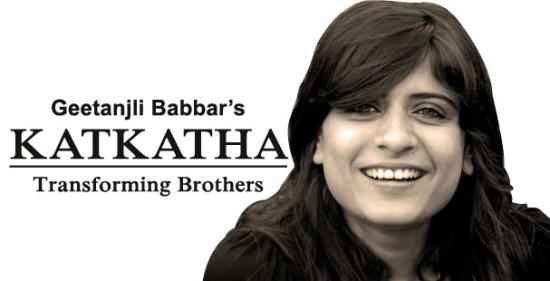There was a time when being poor meant destitution. The little boys and girls begging at traffic signals. Grown men and woman holding down minimum-wage jobs, barely able to provide one meal a day for themselves and their families. You could see it in their faces; in their eyes. Hunger, desperation, a need to improve their lot – it all reflected there, even as their lips begged for money.
It was also easy to identify the middle-class and rich. They looked satisfied, even happy. They had money but rarely made a show of it, using public transport often and only eating out rarely and usually a unpretentious places. Five-star dining was left to the super-rich classes, an indulgence for cricketers, Bollywood people and business leaders.

Today, there is a new class of people emerging – the one’s that popular media would call ‘the poor rich’. In a world where lifestyle has become more important than career and spending is more important than earning, you can spot these people easily enough – young men and women, working white-collar jobs that pay well, salaries that would make their brethren in smaller towns green with envy.
Once upon a time, this would be the class of people who would save responsibly, build up wealth and leave their children with more than they had. Instead, you find their eyes reflecting the sentiments of those who we used to call poor. Desperation, even hunger. The only difference is that they do not hang out at traffic signals, but at your local Starbucks or Le Pain Quotidian.
Yes, these slaves to culture of ‘lifestyle’ might make enough money to be in the top five per cent of Indians, their clothes and accessories, sparkling new phones and burnished hair might indicate easy prosperity, but the truth is that they are often victims of their own weakness. For these things cost money; the hair-stylist, the branded vendor of tailored shirts, the privilege of sitting at the ‘cool’ coffeehouse. And to maintain this appearance of wealth, sacrifices are made.
Apartments are rented in the poshest parts of the city – I know people who rent houses paying half and more of their salary for it, or buy flats shelling out EMI’s that take up all a husband’s salary and a part of the wife’s.
Cars are bought that are hopelessly impractical – any sedan larder than a Maruti Dzire is out-of-place in Mumbai, but the latest Honda car does look so much better, does it not? So there’s another claim on the monthly paycheck.
The cutting tea that sustained us through college is no longer digestible. Even Café Coffee Day is a compromise. Starbucks is the place to be, even if that means Rs. 220 for coffee that still isn’t on par with what the Udipi restaurant serves for Rs. 22.
Eating out is not about good food anymore, but about the place to be seen, the latest sensation, even if it serves food so exotic you do not know what you’re shovelling into your mouth or whether your stomach can handle it.
As society flattens its structure, the formal divisions that kept people separated have come down. The poor see the middle-class, the middle-class see the rich and the rich see the super-rich. In the past, this sparked a desire in the lower rungs of society to raise their status, if not for themselves then for their children. Money was saved, consumption was postponed, and every acquisition, carefully thought through, was treasured. But the modern trend is to want to look like the class above you, seeming is more important than being, and so the devil of conspicuous consumption has taken hold.
Aspirations by themselves are a good thing. They make us want to do more with our lives, they fuel ambition. But if the appearance of wealth is valued more than the accumulation of wealth, this ambition ends up being mis-directed. Like the slum-dweller who buys a television set before paying for his son’s college education, the so-called urban elite spend money on looking richer than they are rather than trying to save and invest it to actually get richer.
In the midst of this spending spree, the sacrifices their parents made are forgotten.
His father may still drive a scooter in Faridabad, but the son must drive a Chevrolet in Mumbai. Her mother might buy one new saree a year, but the daughter must refresh her wardrobe every three months.
Time exists only in the present, and if a future has to be forfeited and the past forgotten, that seems to them a fair bargain in a world where the appearance is prized over the reality.































